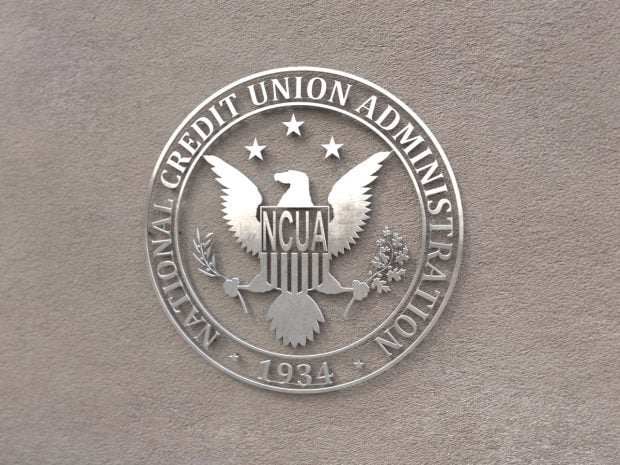 NCUA official seal. (Source: NCUA)
NCUA official seal. (Source: NCUA)
An analysis published Wednesday by the NCUA's Office of the Chief Economist (OCE) compared Call Report data with FEMA's National Risk Index (NRI) to measure the vulnerability of the credit union system to 18 natural threats. The report suggests roughly 25% of federally insured credit unions "are located in communities classified as having relatively high or very high risk of experiencing negative effects due to natural hazards."
The report, titled "Estimating Credit Union Exposure to Climate-Related Physical Risks," added that Minority Depository Institutions (MDIs) face a substantially higher risk than other credit unions.
Recommended For You
The report was compiled, according to NCUA officials, using year-end 2021 credit union Call Report data and the FEMA's NRI to estimate credit union exposure to climate-related physical risks around the country.
 Graph from NCUA report showing credit union exposure to natural hazards.
Graph from NCUA report showing credit union exposure to natural hazards. According to the NCUA, there were three main findings highlighted in the report:
- The 25% of credit unions that are in communities at relatively high or very high risk of experiencing negative outcomes from natural hazards accounted for 34% of system-wide assets, or approximately $750 billion, at the end of 2021.
- Minority depository institutions face a substantially higher risk than the credit union system in aggregate.
- Credit unions most at risk of negative outcomes due to natural hazards tend to be located in coastal areas, particularly in California, Texas and Florida. Together, these three states account for 11% of credit unions located in communities with an elevated risk and 22% of credit union assets.
"This insightful research by the NCUA's Office of the Chief Economist shows that credit unions are not immune to climate-related financial risks and that the costs and number of climate-related natural disasters is accelerating, often hitting disadvantaged communities the hardest," NCUA Chairman Todd Harper said. "By measuring, monitoring and mitigating such risks, the NCUA can fulfill its core obligations of maintaining the safety and soundness of credit unions, protecting consumers and safeguarding the National Credit Union Share Insurance Fund."
The report's focus on MDIs' vulnerability to natural disasters appeared particularly alarming. "We found that just over half of MDIs are at relatively high or very high risk of experiencing negative effects stemming from climate, weather-related and other natural disasters. Nearly two-thirds of MDI assets are concentrated in these high-risk communities," the report stated.
The NCUA's report somewhat reflected findings from a report released in May 2022 by the Madison, Wis.-based Filene Research Institute. Filene's "The Changing Climate for Credit Unions" research estimated "that more than 60% of all U.S. credit unions and at least $1.2 trillion in credit union assets are at physical risk due to acute and chronic climate-related weather events and hazards."
Filene's report focused on the location of more than 11,000 credit union branches located in FEMA's list of designated at-risk counties.
According to the NCUA's study, the costliest natural hazards for credit unions are tornados, strong winds, ravine floods and earthquakes.
 Graph from NCUA's report showing NRI Risk Categories.
Graph from NCUA's report showing NRI Risk Categories. The NCUA board will consider a request for information on climate-related financial risk during Thursday's meeting.
© Touchpoint Markets, All Rights Reserved. Request academic re-use from www.copyright.com. All other uses, submit a request to [email protected]. For more inforrmation visit Asset & Logo Licensing.







